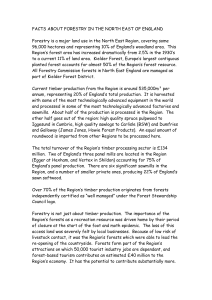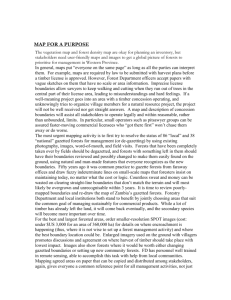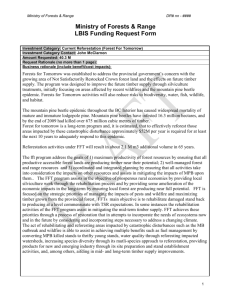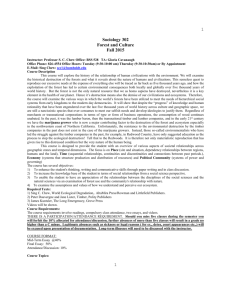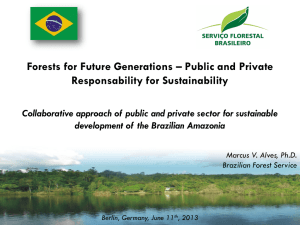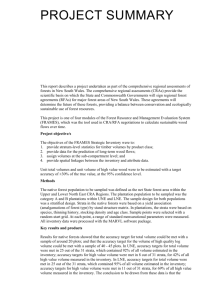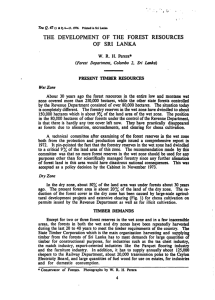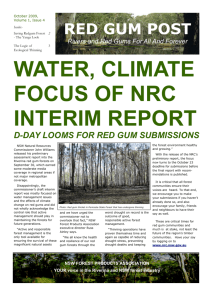Jobs and forest industries
advertisement
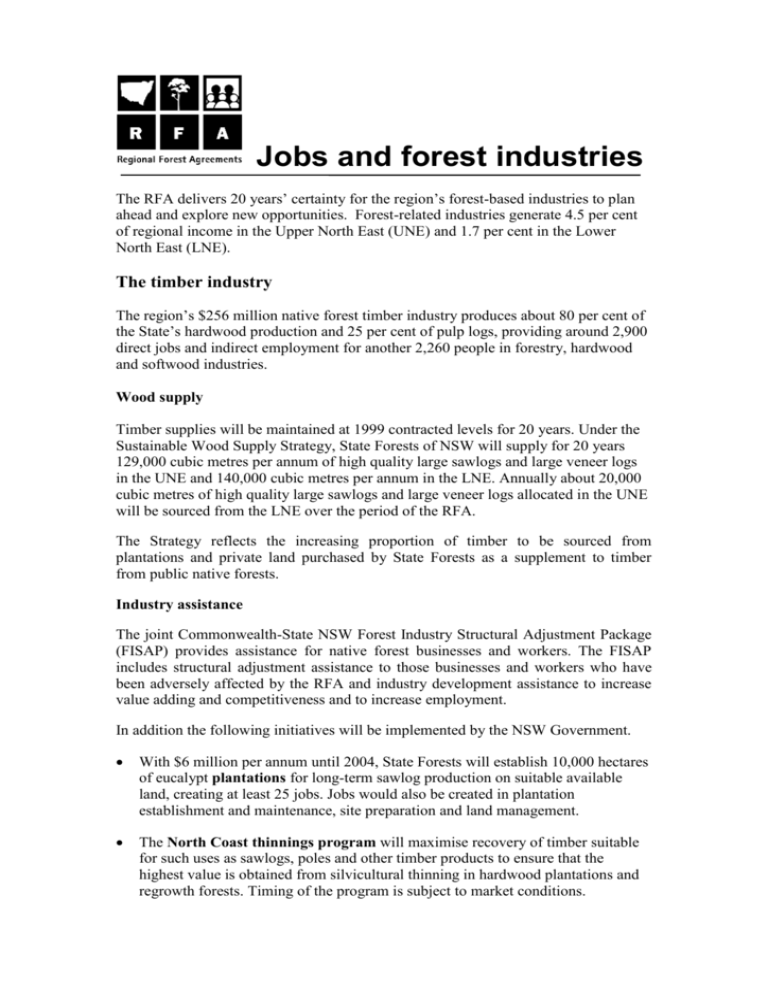
Jobs and forest industries The RFA delivers 20 years’ certainty for the region’s forest-based industries to plan ahead and explore new opportunities. Forest-related industries generate 4.5 per cent of regional income in the Upper North East (UNE) and 1.7 per cent in the Lower North East (LNE). The timber industry The region’s $256 million native forest timber industry produces about 80 per cent of the State’s hardwood production and 25 per cent of pulp logs, providing around 2,900 direct jobs and indirect employment for another 2,260 people in forestry, hardwood and softwood industries. Wood supply Timber supplies will be maintained at 1999 contracted levels for 20 years. Under the Sustainable Wood Supply Strategy, State Forests of NSW will supply for 20 years 129,000 cubic metres per annum of high quality large sawlogs and large veneer logs in the UNE and 140,000 cubic metres per annum in the LNE. Annually about 20,000 cubic metres of high quality large sawlogs and large veneer logs allocated in the UNE will be sourced from the LNE over the period of the RFA. The Strategy reflects the increasing proportion of timber to be sourced from plantations and private land purchased by State Forests as a supplement to timber from public native forests. Industry assistance The joint Commonwealth-State NSW Forest Industry Structural Adjustment Package (FISAP) provides assistance for native forest businesses and workers. The FISAP includes structural adjustment assistance to those businesses and workers who have been adversely affected by the RFA and industry development assistance to increase value adding and competitiveness and to increase employment. In addition the following initiatives will be implemented by the NSW Government. With $6 million per annum until 2004, State Forests will establish 10,000 hectares of eucalypt plantations for long-term sawlog production on suitable available land, creating at least 25 jobs. Jobs would also be created in plantation establishment and maintenance, site preparation and land management. The North Coast thinnings program will maximise recovery of timber suitable for such uses as sawlogs, poles and other timber products to ensure that the highest value is obtained from silvicultural thinning in hardwood plantations and regrowth forests. Timing of the program is subject to market conditions. Up to $1million over five years in haulage assistance will limit any sudden increase in transport costs to millers required to transport over longer distances as a consequence of changes in traditional supply areas. $1.9 million over five years will employ five people in a private forest management unit established by State Forests within 12 months of the RFA. $500,000 for five years will be allocated to undertake a resource inventory, with 10 people employed to monitor the extent and growth of the region’s regrowth timber resource. Aboriginal Cultural Heritage Officers Four Aboriginal cultural heritage officers will be employed equally between State Forests and National Parks and Wildlife Service in the UNE and LNE to give greater protection to cultural heritage and foster a close working partnership between the Aboriginal community and the Government. An additional six traineeships will assist Aboriginal trainees gain land management skills. $520,000 per annum has been made available over five years for these 10 positions. Conservation initiatives $180,000 per annum for five years has been allocated for the completion by the NPWS of forest biological data sets, creating one of the best regional forest biodiversity databases for any forest region. The project will employ two people and will also inform local communities to assist them to participate in regional and local environmental planning. Under the RFA the NSW Government will commit $43 million over three years to long term management of new national parks, creating 90 to 105 jobs. This will cover capital investment of $15 million for basic access, upgraded visitor facilities, boundary fencing, plant and equipmentand infrastructure improvements; $8 million for 90 staff in 1999-2000 and $10 million for 105 staff in subsequent years. Tourism Tourism is significant to the region’s economy, generating expenditure of $2715 million ($919 million in the UNE and $1795 million in the LNE) a year and growing at an annual rate of between two and three per cent. More than two million visits are made each year to the national parks and state forests of North East NSW. The RFA expands national parks and provides certainty for the industry to plan ahead. Other forest-based industries Mining, beekeeping, firewood and grazing are among other forest-based industries in the region to benefit from increased certainty under the RFA. The region’s native forests support a beekeeping industry with a gross output worth $10.6 million in 1997-98. The forests also have value for resting bees and pollination.
